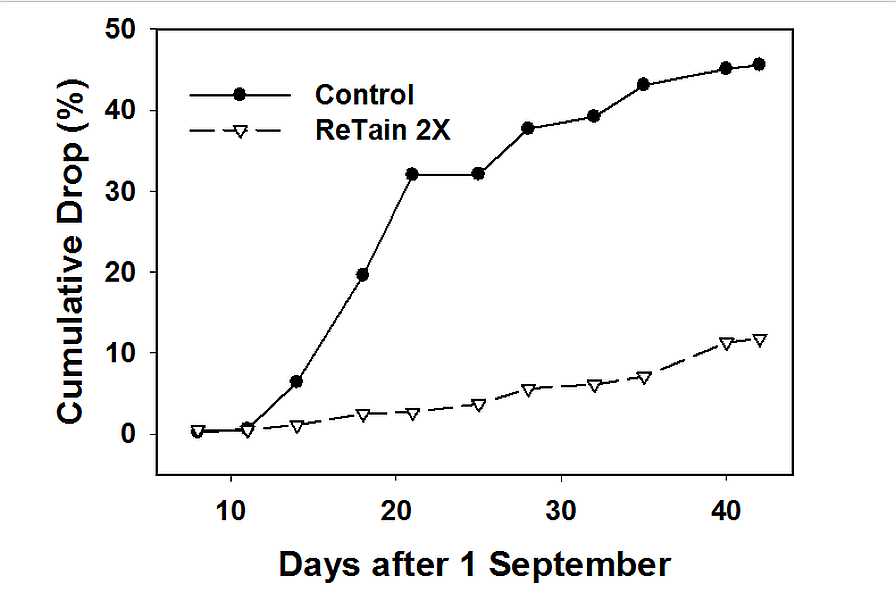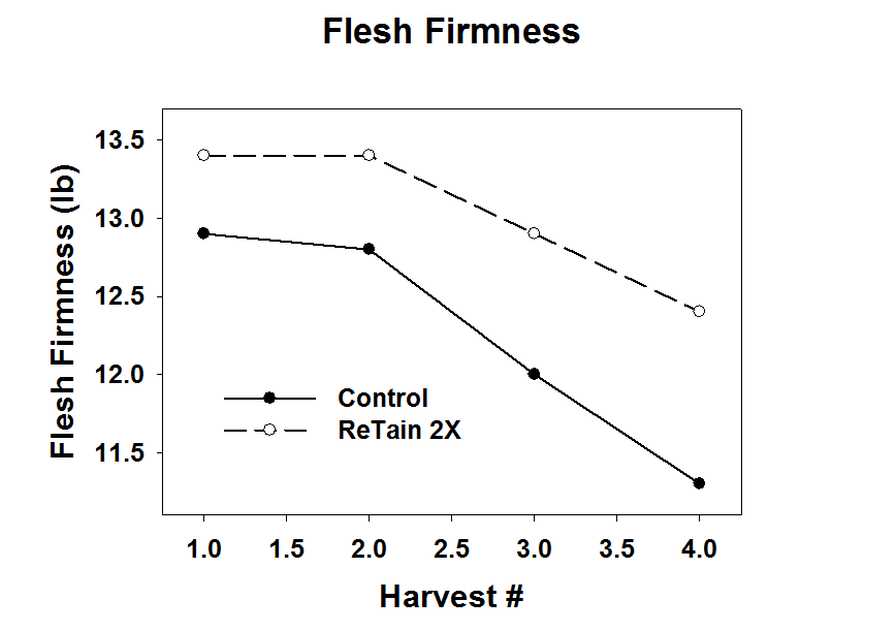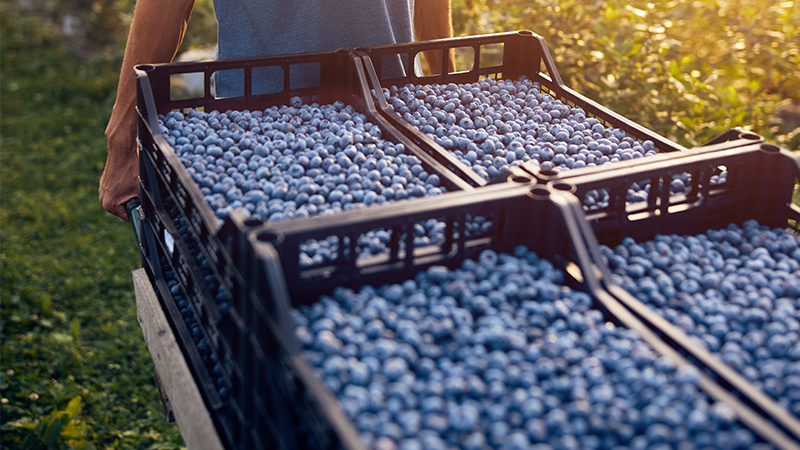What About Using a High Rate of PGRs on Honeycrisp Apples?
The ripening time of popular and heavily planted apples has created a challenge and a dilemma for many growers. This is especially true in New England where ‘Honeycrisp,’ ‘Gala,’ and ‘McIntosh’ ripen essentially at the same time. This has resulted in a situation that requires growers to develop a strategy to harvest high-quality apples that are capable of a good potential while minimizing preharvest drop potential over the harvest period.
‘Honeycrisp’ is a low-ethylene-producing cultivar. ReTain, a plant growth regulator from Valent USA, is frequently used to delay preharvest drop, and low rates are chosen primarily to minimize the influence it may have on delaying red color development. The low rates might be restrictive in that drop may become a serious problem, especially during warm, cloudy years, and when harvest is delayed because red color may be slow to develop.
Following the revision of the ReTain label that allowed for use of up to two pouches of the product (333g) to be applied per acre per year, we evaluated these higher rates on ‘McIntosh’ and ‘Cortland.’ The significant delay in ripening observed suggested the delay documented in these studies might be very beneficial if used on ‘Honeycrisp.’
Field Trial
An experiment was initiated to evaluate the use of similar times of application and high rates on ‘Honeycrisp’ following the protocol. A block of mature ‘Honeycrisp’ on M.9 trained as a tall spindle was selected. About 31/2 weeks before anticipated harvest, one pouch per acre of ReTain accompanied by Silwet L-77 surfactant was applied to selected trees.
A second one pouch per acre application was made two weeks later. Other trees in the block were selected to not receive ReTain. Individual trees were designated to be drop trees, and no fruit was harvested from these trees. Twice per week, starting on Sept. 7 and ending on Oct. 12, all dropped fruit were picked up under these trees and counted. Cumulative drop was calculated at the end of the experiment. Four harvests were made at approximate one-week intervals starting on Sept. 15.

Influence of two full rates of ReTain (two 333g pouches/acre) on preharvest drop of ‘Honeycrisp’ apples.
At each harvest, 20 fruit were randomly selected from each harvest tree and taken to the lab for quality analysis. Fruit were weighed, the surface red color was estimated to the nearest 10%, internal ethylene of each apple was measured, flesh firmness and soluble solids were determined, and then the maturity was estimated using the Cornell Generic Starch Chart with a scale ranging from 1 (immature) to 8 (overmature). On the final harvest date (Oct. 12), all remaining fruit on the trees were harvested and placed in regular air storage for either six weeks (Nov. 25) or 13 weeks (Jan 5).
Over the course of the experiment, fruit drop under ReTain-treated trees was 11.8%, whereas drop under untreated control trees was 45.6%. It is noteworthy that drop under control trees during the normal harvest period exceeded 30%. The savings alone due to effective drop control by ReTain is statistically and financially significant.
Results
ReTain effectively and significantly slowed flesh firmness loss of treated fruit . The flesh firmness of ReTain-treated fruit was similar to the firmness of untreated fruit at the first and second harvest dates on Sept. 15 and Sept. 25.

Influence of two full-rate applications of ReTain on flesh firmness of ‘Honeycrisp’ apples harvested on Sept. 15, Sept. 25, Oct. 5, and Oct. 12.
ReTain significantly delayed ripening as determined by both a reduction in starch rating (11/2 points) and by delaying the onset of the ethylene climacteric. The characteristic that is perhaps of greatest interest is the effect ReTain had on red color development of treated apples.
ReTain delayed red color development in apples at both the third and fourth harvest (Oct. 5 and 12). However, if you compare the red color of ReTain-treated fruit on the last two harvest dates (71% and 73%) with the untreated fruit on the first two harvests (70% and 72%) red color on Sept. 15 and 25) they are essentially identical. Therefore, if red color of untreated fruit on these dates is acceptable, and it was with more than 70% red surface color, then the same red color should be acceptable at the later harvest dates.
Fruit harvested on Oct. 12 were placed in regular air storage to help determine the amount of time a grower would have to market fruit harvested at that time. The storage parameters pertinent to ‘Honeycrisp’ were flesh firmness, fruit rot, bitter pit, and soft scald. On Nov. 25, there were no differences between control and ReTain-treated fruit.
When evaluated in January, ReTain-treated fruit had more soft scald, although they were also firmer and had less fruit rot than the untreated control fruit. The increase in soft scald was not surprising since late harvested ‘Honeycrisp’ are more susceptible to developing soft scald, and fruit were not preconditioned with six days at room temperature prior to be placing in storage.
The results from this experiment show that growers have a viable option when dealing with harvest management of ‘Honeycrisp.’ The most obvious benefit would be for those who sell a portion of their crop through pick-your-own. They can offer customers ‘Honeycrisp’ on the trees through the Columbus Day weekend, one of the busiest retail weekends of the year. The fruit remaining on the tree may be harvested and safely marketed over the next six weeks.
Observation of fruit harvested on these late dates was that it was perhaps the most attractive ‘Honeycrisp’ harvested during that year. This strategy is not meant to allow growers to harvest fruit late with the intention of placing them in long-term storage. A key component in this strategy is the ability for ReTain to delay harvest until later when weather conditions are generally cooler and more favorable for red color development.
This experiment was done in what would generally be considered a “normal” year. If abnormally warm temperatures occur during the end of September and early October, then this ReTain use strategy may not be as effective.










